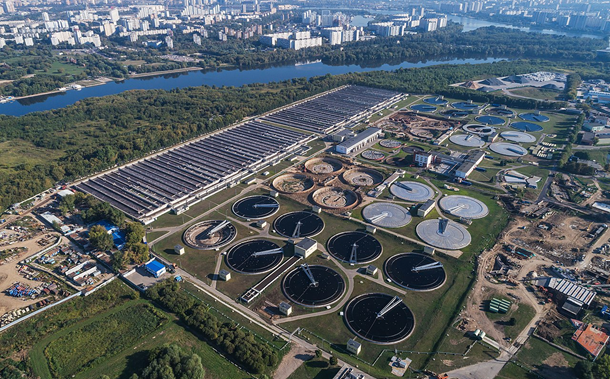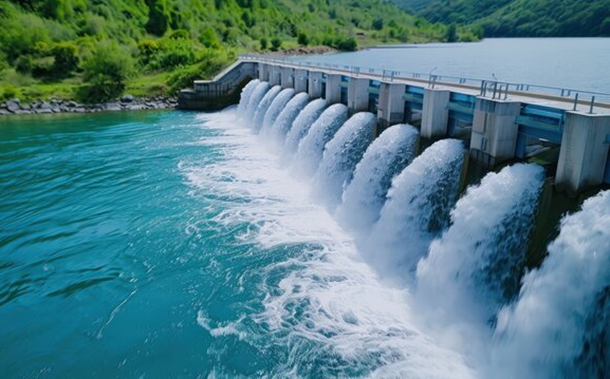Influence of Compaction Energy on Cement Stabilized Soil for Road Construction
Downloads
Doi:10.28991/CEJ-2022-08-03-012
Full Text:PDF
Downloads
[2] Drew, I. R. (2005). Influence of compaction energy on soil engineering properties. Master Thesis. Iowa State University, Iowa USA. Available online: https://dr.lib.iastate.edu/server/api/core/bitstreams/a5366889-bcc1-4db8-b9a5-c1ce0a760a28/content (accessed on January 2022).
[3] Vinod, P. P., Sridharan, A., & Soumya, R. J. (2015). Effect of compaction energy on CBR and compaction behaviour. Proceedings of the Institution of Civil Engineers: Ground Improvement, 168(2), 116–121. doi:10.1680/grim.13.00059.
[4] Attom, M. F. (1997). The effect of compactive energy level on some soil properties. Applied Clay Science, 12(1–2), 61–72. doi:10.1016/S0169-1317(96)00037-3.
[5] Sridharan, A., & Gurtug, Y. (2004). Swelling behaviour of compacted fine-grained soils. Engineering Geology, 72(1–2), 9–18. doi:10.1016/S0013-7952(03)00161-3.
[6] Basack, S., Goswami, G., Khabbaz, H., Karakouzian, M., Baruah, P., & Kalita, N. (2021). A Comparative Study on Soil Stabilization Relevant to Transport Infrastructure using Bagasse Ash and Stone Dust and Cost Effectiveness. Civil Engineering Journal, 7(11), 1947–1963. doi:10.28991/cej-2021-03091771.
[7] Sabat, A. K., & Moharana, R. K. (2015). Effect of compaction energy on engineering properties of fly ash -granite dust stabilized expansive soil. International Journal of Engineering and Technology, 7(5), 1617–1624.
[8] Yusoff, S. A. N. M., Bakar, I., Wijeyesekera, D. C., Zainorabidin, A., Azmi, M., & Ramli, H. (2017). The effects of different compaction energy on geotechnical properties of kaolin and laterite. AIP Conference Proceedings, 1875(1). doi:10.1063/1.4998380.
[9] Ene, E., & Okagbue, C. (2009). Some basic geotechnical properties of expansive soil modified using pyroclastic dust. Engineering Geology, 107(1-2), 61–65. doi:10.1016/j.enggeo.2009.03.007.
[10] Alhaji, M. M., Alhassan, M., Adejumo, T. W., & Jibrin, R. (2020). Effect of Density on Consolidation and Creep Parameters of Clay. Indonesian Journal of Science and Technology, 5(1), 31–44. doi:10.17509/ijost.v5i1.16819.
[11] Khalid, N., Mukri, M., Kamarudin, F., & Abdul Ghani, A. H. (2020). Effect of compaction characteristics on hydraulic conductivity performance for sedimentary residual soil mixed bentonite as compacted liners. IOP Conference Series: Earth and Environmental Science, 498(1), 12003. doi:10.1088/1755-1315/498/1/012003.
[12] Srihandayani, S., Soehardi, F., & Putri, L. D. (2020). CBR Laboratory Analysis for Determining the Number of Compaction Tracks to Achieve Field CBR. IOP Conference Series: Earth and Environmental Science, 469(1), 12012. doi:10.1088/1755-1315/469/1/012012.
[13] Lindh, P. (2004). Compaction- and strength properties of stabilised and unstabilized fine-grained tills. PhD Thesis, Soil Mechanics and Foundation Engineering. Lund University, Lund Sweden.
[14] Rauch, A. F., Harmon, J. S., Katz, L. E., & Liljestrand, H. M. (2002). Measured effects of liquid soil stabilizers on engineering properties of clay. Transportation Research Record, 1787, 33–41. doi:10.3141/1787-04.
[15] Vorobieff, G. (2006). A new approach to laboratory testing of stabilised materials. ARRB Conference, 22nd, 2006, Canberra, Australia (29 October-2 November 2006).
[16] Anjaneyappa, A. M. (2013). Influence of Compaction Energy on Soil Stabilized with Chemical Stabilizer. International Journal of Research in Engineering and Technology, 2(13), 211. doi:10.15623/ijret.2013.0213037.
[17] Santoni, R. L., Tingle, J. S., & Webster, S. L. (2002). Stabilization of silty sand with nontraditional additives. Transportation Research Record, 1787(1787), 61–72. doi:10.3141/1787-07.
[18] Nwaiwu, C. M. O., Mshelia, S. H., & Durkwa, J. K. (2012). Compactive effort influence on properties of quarry dust-black cotton soil mixtures. International Journal of Geotechnical Engineering, 6(1), 91–101. doi:10.3328/IJGE.2012.06.01.91-101.
[19] Pongsivasathit, S., Horpibulsuk, S., & Piyaphipat, S. (2019). Assessment of mechanical properties of cement stabilized soils. Case Studies in Construction Materials, 11, 301. doi:10.1016/j.cscm.2019.e00301.
[20] Solihu, H. (2020). Cement Soil Stabilization as an Improvement Technique for Rail Track Subgrade, and Highway Subbase and Base Courses: A Review. Journal of Civil and Environmental Engineering, 10(3). doi:10.37421/jcde.2020.10.344.
[21] Khan, K. A., Nasir, H., Alam, M., Khan, S. W., & Ahmad, I. (2020). Performance of Subgrade Soil Blended with Cement and Ethylene Vinyl Acetate. Advances in Civil Engineering, 2020. doi:10.1155/2020/9831615.
[22] Consoli, N. C., Rotta, G. V., & Prietto, P. D. M. (2000). Influence of curing under stress on the triaxial response of cemented soils. Geotechnique, 50(1), 99–105. doi:10.1680/geot.2000.50.1.99.
[23] Yilmaz, Y., & Ozaydin, V. (2013). Compaction and shear strength characteristics of colemanite ore waste modified active belite cement stabilized high plasticity soils. Engineering Geology, 155, 45–53. doi:10.1016/j.enggeo.2013.01.003.
[24] Croft, J. B. (1967). The influence of soil mineralogical composition on cement stabilization. Geotechnique, 17(2), 119–135. doi:10.1680/geot.1967.17.2.119.
[25] Croft, J. B. (1968). The problem in predicting the suitability of soils for cementitious stabilization. Engineering Geology, 2(6), 397–424. doi:10.1016/0013-7952(68)90018-5.
[26] Horpibulsuk, S., Rachan, R., Chinkulkijniwat, A., Raksachon, Y., & Suddeepong, A. (2010). Analysis of strength development in cement-stabilized silty clay from microstructural considerations. Construction and Building Materials, 24(10), 2011–2021. doi:10.1016/j.conbuildmat.2010.03.011.
[27] Afrin, H. (2017). A Review on Different Types Soil Stabilization Techniques. International Journal of Transportation Engineering and Technology, 3(2), 19. doi:10.11648/j.ijtet.20170302.12.
[28] Patel, M. A., & Patel, H. S. (2012). A Review on Effects of Stabilizing Agents for Stabilization of Weak Soil. Civil and Environmental Research 2(6), 1–7.
[29] Mousavi, S., & Wong, L. S. (2015). Mechanical behavior of compacted and stabilized clay with kaolin and cement. Jordan Journal of Civil Engineering, 9(4), 477–486. doi:10.14525/jjce.9.4.3120.
[30] Kodikara, J., & Yeo, R. (2005). Chapter 15 Performance evaluation of road pavements stabilized in situ. Elsevier Geo-Engineering Book Series, 3(C), 409–443. doi:10.1016/S1571-9960(05)80018-7.
[31] NF P 94-093 (1999). Sols: Reconnaissance et essais: Détermination des références de compactage d'un matériau. In Essai Proctor Normal-Essai Proctor Modifié [Soils: Investigation and testing. Determination of the compaction characteristics of a soil. Standard Proctor test. Modified Proctor test]. Association Française de Normalisation, Paris, France.
[32] NF P94-078 (1997). Sols: reconnaissance et essais-Indice CBR après immersion. Indice CBR immédiat. Indice Portant Immédiat-Mesure sur échantillon compacté dans le moule CBR. Association Française de Normalisation, Paris, France.
[33] NF P94-077 (1997). Norme française." Sols : reconnaissance et essais”Essai de compression uni axiale. Association Française de Normalisation, Paris, France.
[34] Al-Aghbari, M. Y., Mohamedzein, Y. E. A., & Taha, R. (2009). Stabilisation of desert sands using cement and cement dust. Proceedings of the Institution of Civil Engineers: Ground Improvement, 162(3), 145–151. doi:10.1680/grim.2009.162.3.145.
[35] Adeyemi, G. O., & Abolurin, S. B. (2000). Strength characteristics of a chemically stabilized lateritic soil from kilometer 4, Ile–Ife/Sekona road, Southwestern Nigeria. Journal of Mining and Geology, 36(1), 113-119.
[36] Jaritngam, S., Somchainuek, O., & Taneerananon, P. (2014). Feasibility of laterite-cement mixture as pavement base course aggregate. Iranian Journal of Science and Technology - Transactions of Civil Engineering, 38(C1+), 275–284.
[37] CTTP Algérie. (2001). Catalogue de des Chaussées Neuves Fascicule 1, NOTICE D'UTLISATION. Organisme National de Contrí´le Technique des Travaux Publics, Kouba. Algérie.
[38] Bowles, J. E. (1992). Engineering properties of soils and their measurement. Second edition. In Engineering properties of soils and their measurement (4th Edi.). McGraw-Hill Inc., New York City, United States.
[39] Sabat, A. K., & Moharana, R. K. (2015). Effect of compaction energy on engineering properties of fly ash -granite dust stabilized expansive soil. International Journal of Engineering and Technology, 7(5), 1617–1624.
[40] Amadi, A. A., & Eberemu, A. O. (2012). Delineation of compaction criteria for acceptable hydraulic conductivity of lateritic soil-bentonite mixtures designed as landfill liners. Environmental Earth Sciences, 67(4), 999–1006. doi:10.1007/s12665-012-1544-z.
[41] Das, B. M. (2021). Principles of Geotechnical Engineering. Cengage Learning, Massachusetts, United States.
[42] CEBTP. (1984). Guide pratique de dimensionnement des chaussées pour les pays tropicaux. ISBN2110848111. Available online: https://www.francescomiceli.com/blog/Guide_pratique_dimensionnement.pdf (accessed on January 2022).
[43] Akmal Abd, N., Safuan A., A., Md Noor, N., & Yaacob, H. (2014). Effect of Cement Stabilized Kaolin Subgrade on Strength Properties. Journal of Applied Sciences, 14(8), 842–845. doi:10.3923/jas.2014.842.845.
[44] Mousavi, S. E. (2017). Stabilization of compacted clay with cement and/or lime containing peat ash. Road Materials and Pavement Design, 18(6), 1304–1321. doi:10.1080/14680629.2016.1212729.
- Authors retain all copyrights. It is noticeable that authors will not be forced to sign any copyright transfer agreements.
- This work (including HTML and PDF Files) is licensed under a Creative Commons Attribution 4.0 International License.![]()














